House on the Rock, Part the Fourth (and goodness knows how many more will follow!)
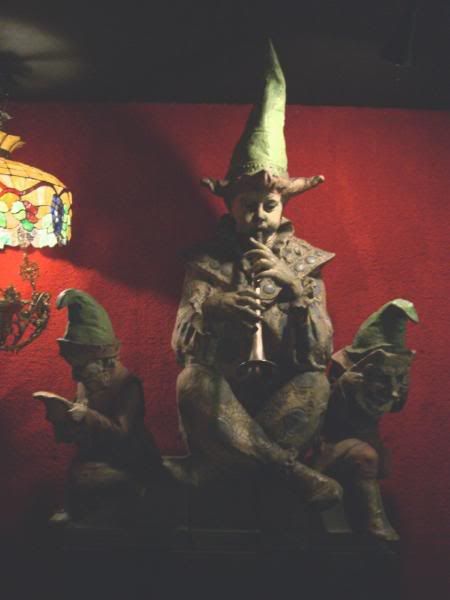
Follow the pied piper from the warmth and safety of your pizza and restroom break and venture deeper, toward the heart of the House on the Rock experience.
Next up on our tour: The Music of Yesterday.
Some of the music machines on display here are antiques that have been restored to their former glory, and some sprang entirely from the fevered imagination and herculean efforts of Alex Jordan himself. For example, the Blue Room, with its mechanical chamber orchestra:
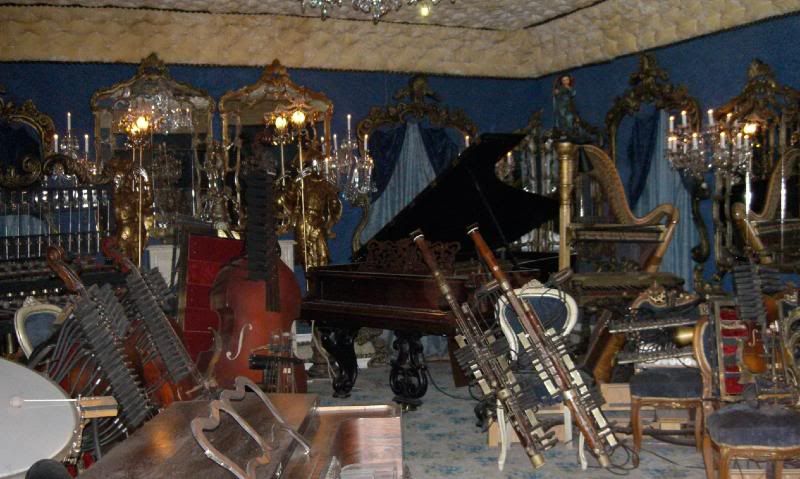
The music works in this room used to be notoriously off-key, but, as with the Gladiator earlier in the tour, we were unpleasantly surprised to find that it had been tuned up as well. Almost. As we turned to go, about halfway through a passable rendition of the Poet and Peasant Overture, something--who could identify which instrument it was?--sounded SUCH a sour note that it struck joy into our hearts! They can try to tune these things up--but apparently they cannot succeed entirely! Hooray! I wonder how the Blue Room's version of the Anvil Chorus survived the tuning. Heh.
Among the most stunning of the music machines on display (and they are all incredible to behold) is the Mikado:
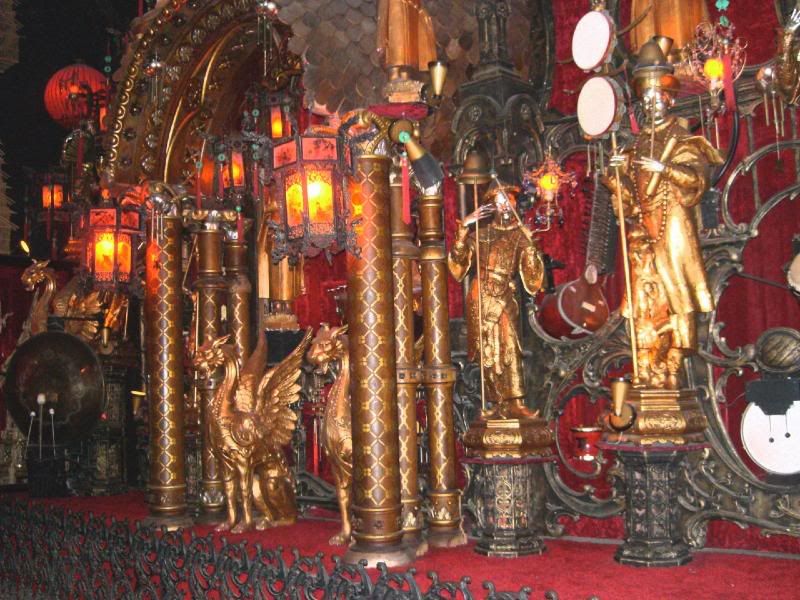
It's a dazzling display of gilt and stiff, limited audio-animatronics, what with this Mifune-esque tympanist sitting in the center of it all, scowling and pounding out a relatively steady beat to Danse Macabre:
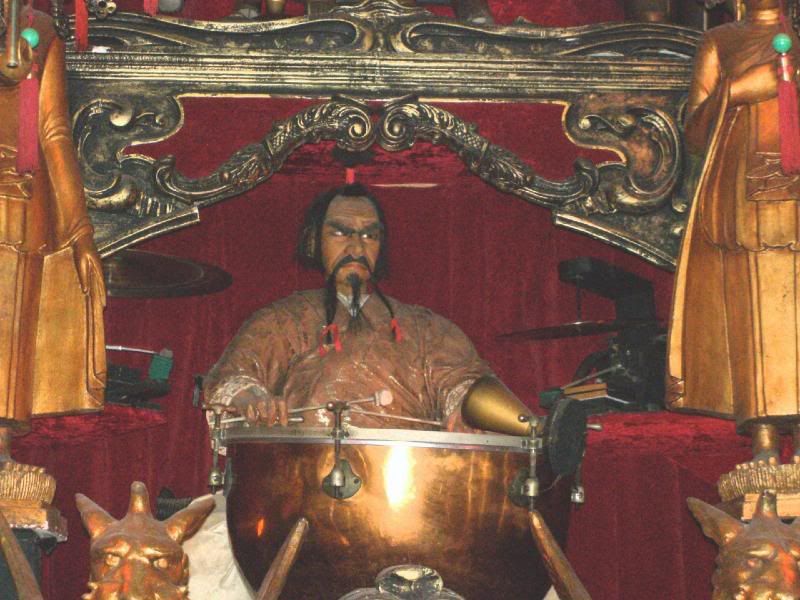
Truly, the Mikado is the high point of the Music of Yesterday section, but it is in no way its last mecha-musical extravaganza.
There is the Blue Danube:
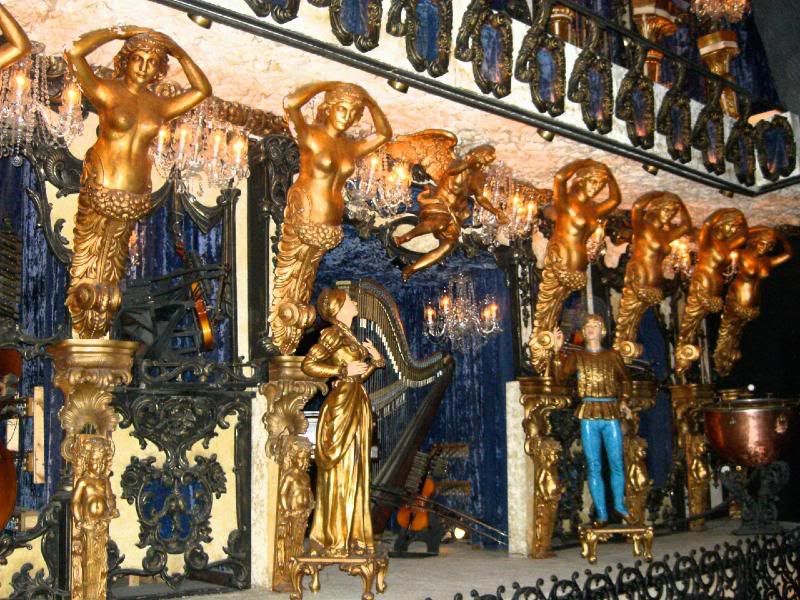
And the sparkly, dripping rock-candy crystal of The Red Room, which plays Dance of the Sugar Plum Fairy and features a sumptuous velvet-lined sleigh pulled by uber-fanged lion and tiger:
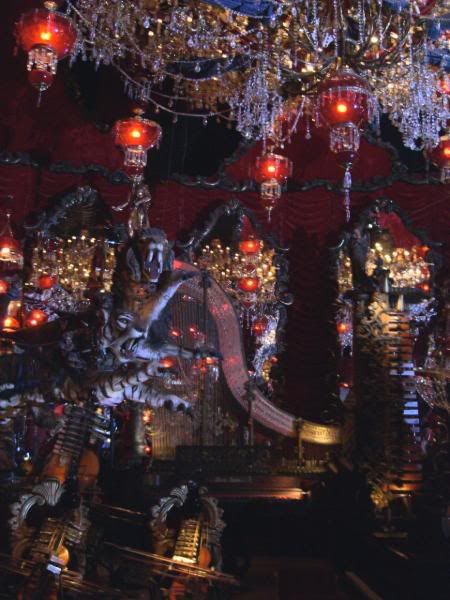
Add to this a host of smaller and sometimes just downright strange offerings such as this bear and monkey show

and you have the makings of a surreal, cerebral carnival--with no drugs involved! (Well--I guess THAT aspect of the HOTR experience would be up to YOU, dear reader.)
After this bout of ocular bedazzlement and aural assault, the relative quiet of the Spirit of Aviation display comes as welcome respite. Most of the action in this small section is on the ceiling.
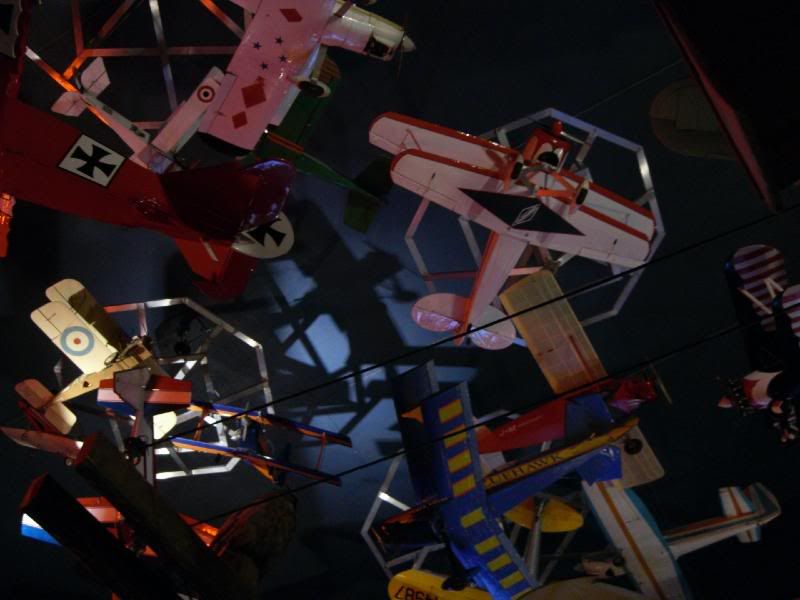
Which, unlike a lot of stuff at House on the Rock, makes perfect sense.
Don't be fooled, though. This breather, however brief, is just a tiny scoop of sorbet to cleanse your palate for an all-out attack on the senses. You'll have to wait until Part the Fifth, though.
Until then, a glimpse at the glory to come:
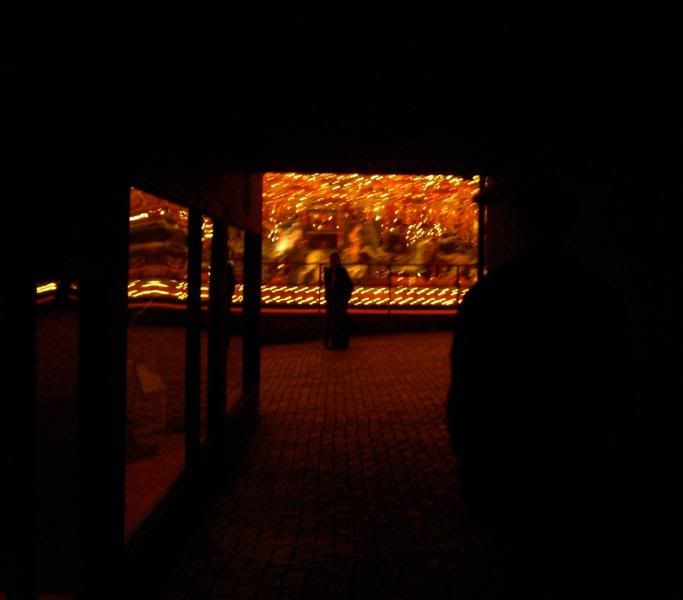
Labels: House on the Rock, mechanical music machines, Wisconsin

2 Comments:
I have a question. How come out of all of the thousands of photos of House on the Rock I've seen, that almost no-one takes a photo of the "Absinthe House" Link E coin piano (with the grotesque carvings screwed onto the case), but EVERYONE takes a photo of the clown statue playing a horn next to it? What is the allure of this statue? Is there some brochure or something that tells you what to take photos of, and says photographing the piano is bad luck? Here's an original catalog view of the instrument:
http://www.timtrager.com/Link%20Orchestrion%20Brochure.jpg
and Here's what it looks like today (thanks to Alex and co.); one of the few photos I've found of it online:
http://www.flickr.com/photos/22874721@N00/2281910651/in/set-72157603955996796/
Here's a photo of another E surviving today, this one in a private collection:
http://www.flickr.com/photos/docmoreau/400169221/
And finally, one on display at the Winchester Mystery House:
http://www.flickr.com/photos/yleycoyote/222716219/
I'm glad you recognize many of these tunes!
You mentioned the Blue Room being "tuned-up" or something. Unless that last time you went was pre-1993 or something, I cannot see how it would be any more or less in-tune than it is now. Besides the real percussions, the music is provided by synthesizers which play through small speakers somewhat hidden behind some of the violins (and also behind the harp). However, when it was first put together and up until several years ago, the actual sound came from organ pipes from a Philipps Paganini violin piano that was taken apart.
http://www.mechanicalmusicpress.com/history/pianella/wpo_idex.htm
This instrument was later sold, reassembled and restored, and now graces a large private collection in the greater Chicago area. This is about the same time the synthesizers were put in. Though they are in-tune with themselves, they are not perfectly-in-tune with the old theatre organ orchestra bells and marimba in the corner, and so perhaps this is the "out-of-tune" sound you mean.
The Franz Josef and Mikado, however, still use real organ pipes, from a theatre organ and a Mortier dance organ, respectively. Thus, depending on when they are serviced, they can sound quite out-of-tune, or fairly nice.
The Franz Josef also has synthesizers which simulate the "harpsichord" (actually a gutted square piano) and string sounds. These never go out of tune, so when the pipes are out of tune with the synthesizers, it can sound particularly ripe.
Post a Comment
<< Home